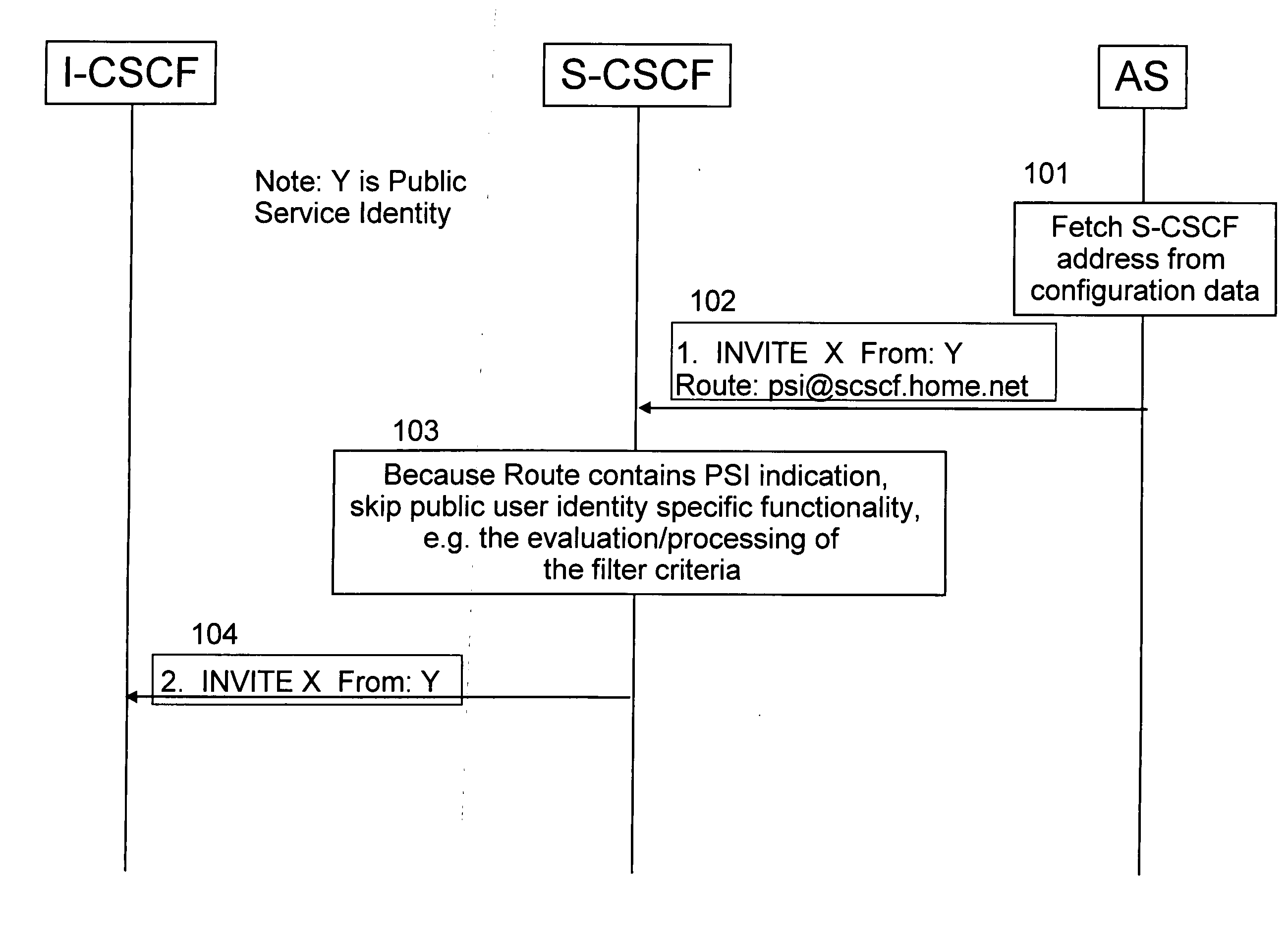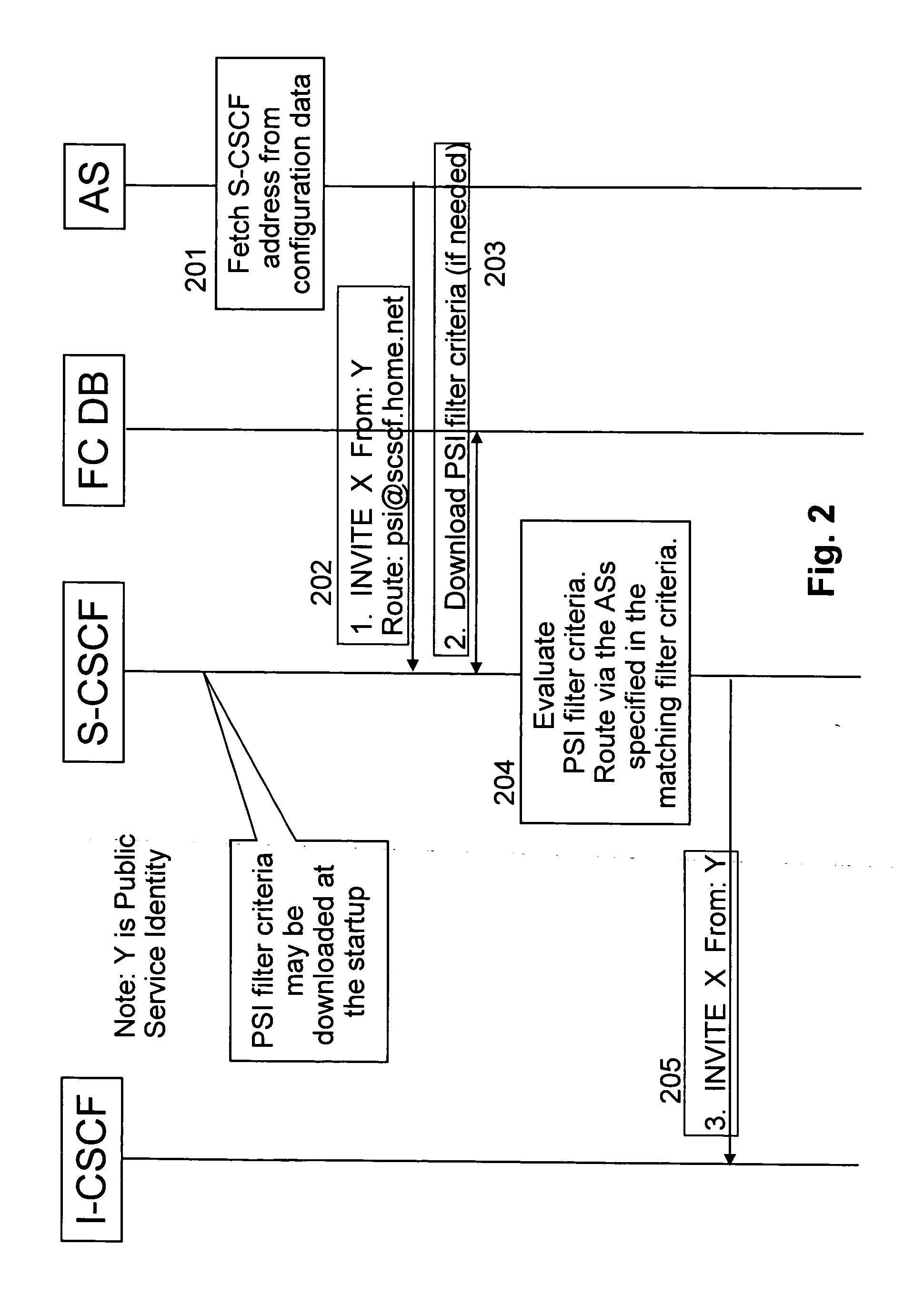Function mode routing
- Summary
- Abstract
- Description
- Claims
- Application Information
AI Technical Summary
Benefits of technology
Problems solved by technology
Method used
Image
Examples
first embodiment
n AS Originating PSI Routing
In the first embodiment, a signal of PSI instructing an S-CSCF to select PSI function mode to skip over public user identity specific functions e.g. current (i.e. user specific) filter criteria evaluation is used. This signal is used in an initial request issued by a host, e.g. an AS, hosting the PSI, to an S-CSCF with PSI as originator. The S-CSCF is selected with the help of configuration information of the host hosting the PSI.
The signal of PSI may be a) a character or bit string in the user part or b) a port number or c) a parameter or parameter value or d) a modification of the name / address of the next hop or e) any combination of the above (a-d)
associated with the name / address of the next hop, e.g. an S-CSCF that will be used as SIP Universal Resource Identifier (URI) in the Route header field of the initial request sent from the AS to the next hop, e.g. an S-CSCF.
The next hop, e.g. S-CSCF, name / address is fetched from a configuration fi...
second embodiment
ia
In the second embodiment new PSI filter criteria are used, which are evaluated when the identity is a Public Service Identity (PSI) (while the current i.e. the user filter criteria are evaluated when the identity is a public user identity). PSI filter criteria are downloaded from a database FC DB. They may be downloaded at the startup of an S-CSCF or later once when first needed. Alternatively, the filter criteria may be downloaded always when needed or later if the filter criteria are not available on S-CSCF e.g. have been removed from the storage of the S-CSCF. The filter criteria may be associated with PSIs or they may be independent of PSIs. In the first case only PSI filter criteria associated with the PSI in question may be evaluated, while in the latter case all PSI filter criteria may be evaluated.
An implementation of a database containing PSI filter criteria may be e.g. a) a simple storage containing only the independent PSI filter criteria or b) a database with PSI ...
third embodiment
PSI Indication
In the third embodiment, a signal of PSI is used to distinguish PSI and PUI in the locator entity (e.g. SLF / HSS or similar database or alike) and to be able to interpret the name / address in the locator entity as a name / address of a target network entity (e.g. S-CSCF or AS) or as a name / address of another locator entity (e.g. HSS). A signal of PSI is used in a response to a query sent to a Subscription Locator Function / Home Subscriber Server (SLF / HSS) or similar database or the like to find a host to which a request destined to a PSI is to be routed from an I-CSCF. The signal may be sent in an initial request from the I-CSCF to the host, e.g. an S-CSCF or AS. Because of the signal, the host e.g. the S-CSCF or AS knows to handle the identity as Public Service Identity instead of Public User Identity.
The signal of PSI may be a) a character or bit string in the user part or b) a port number or c) a parameter or parameter value or d) a modification of the name / addres...
PUM
 Login to View More
Login to View More Abstract
Description
Claims
Application Information
 Login to View More
Login to View More - R&D
- Intellectual Property
- Life Sciences
- Materials
- Tech Scout
- Unparalleled Data Quality
- Higher Quality Content
- 60% Fewer Hallucinations
Browse by: Latest US Patents, China's latest patents, Technical Efficacy Thesaurus, Application Domain, Technology Topic, Popular Technical Reports.
© 2025 PatSnap. All rights reserved.Legal|Privacy policy|Modern Slavery Act Transparency Statement|Sitemap|About US| Contact US: help@patsnap.com



